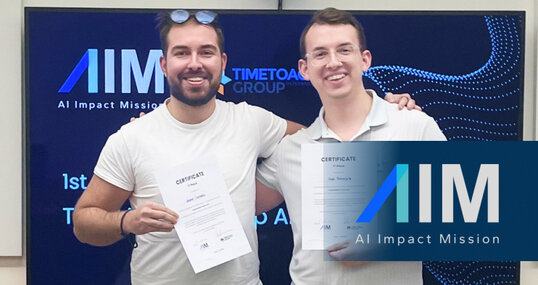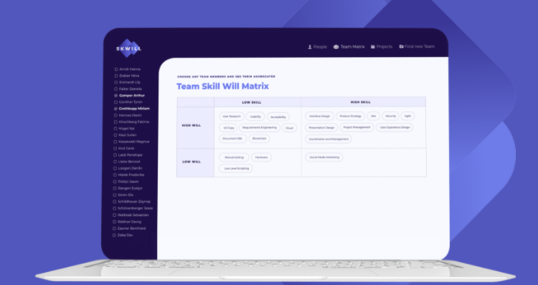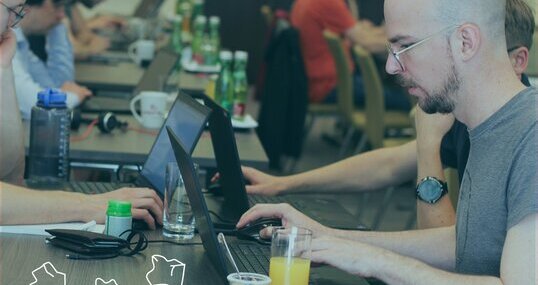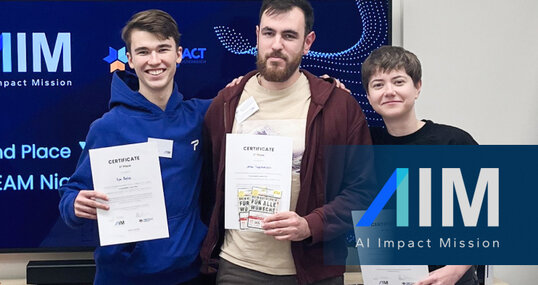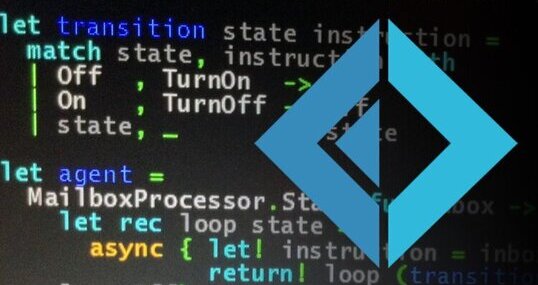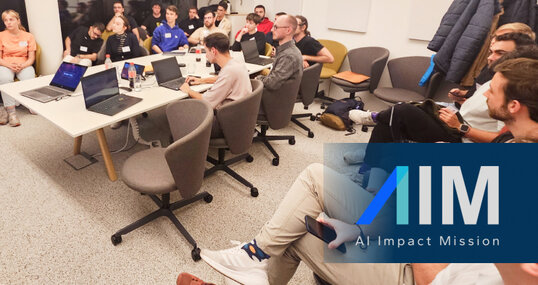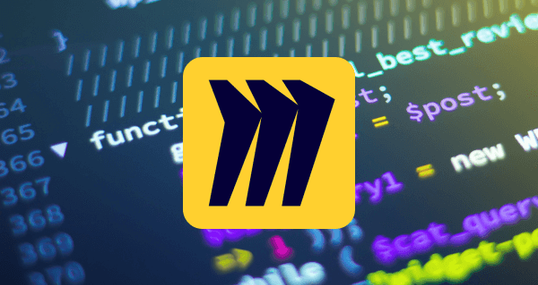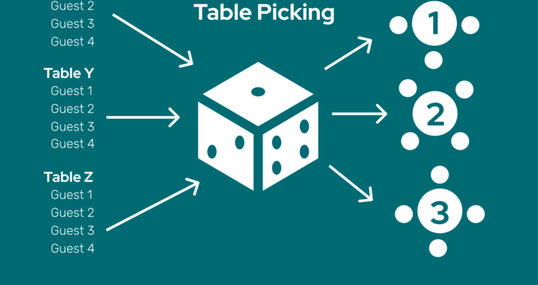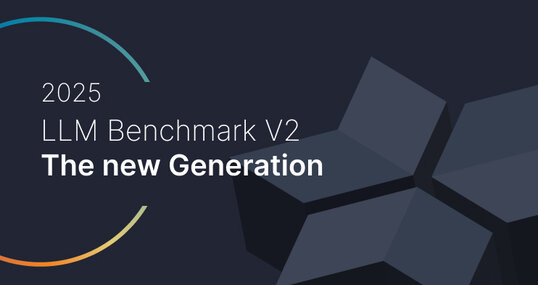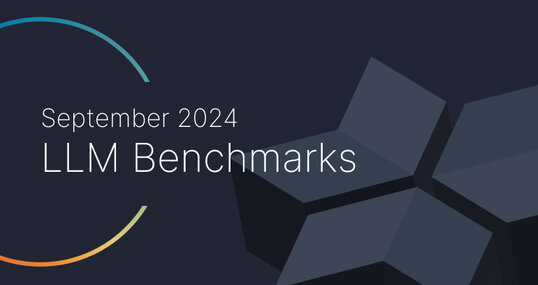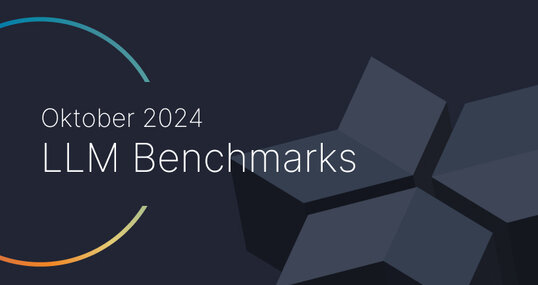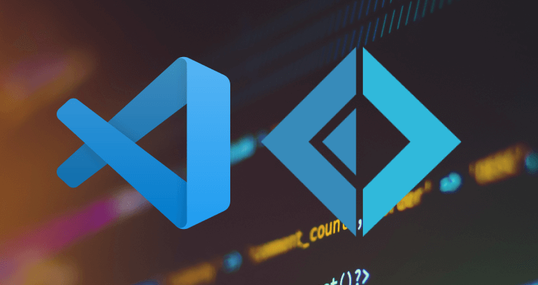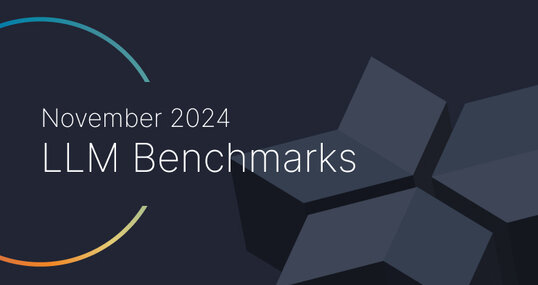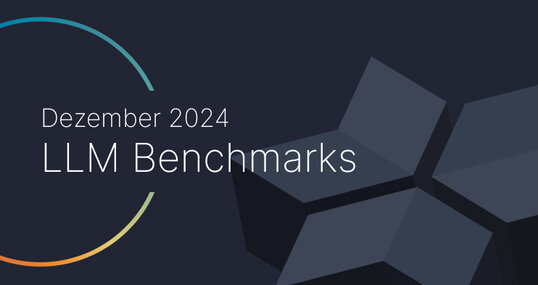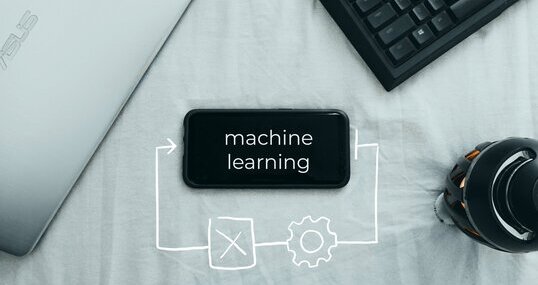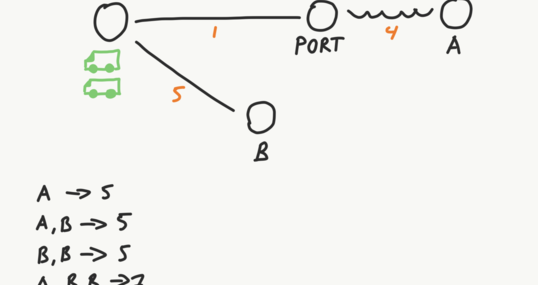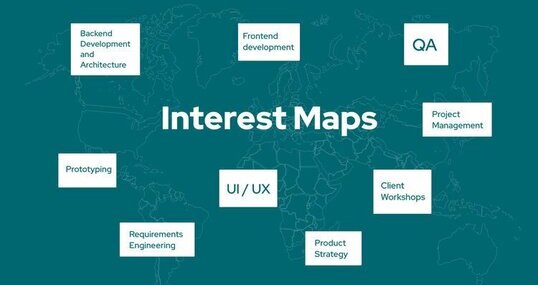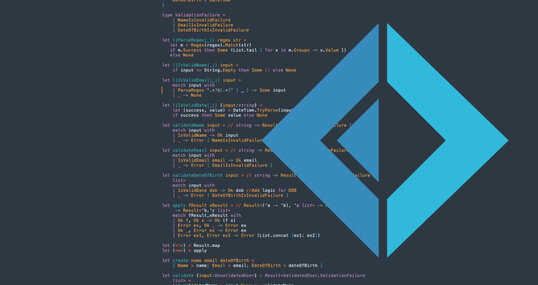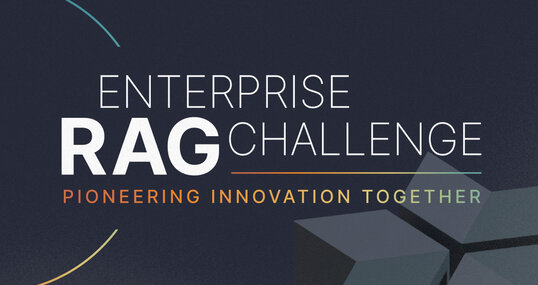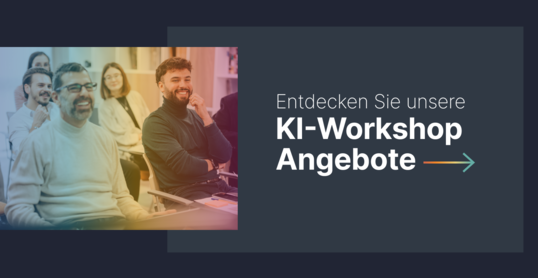As part of their onboarding, all of our employees are encouraged to fill out a “Skwill” — a small matrix that shows an overview of their strengths and interests in different fields. The matrix is “public” (i.e. visible to anyone inside the company) and makes it super easy to share your skillset with teammates or people outside of your team.
What is Skwill?
Skwill is a project that originally came out of our Innovation Incubator. The basic idea was to recreate a Skill/Will matrix in digital form as a small app and incorporate it into our everyday to create strong and diverse project teams and support the career development of each employee; while the concept of a skill/will matrix isn’t revolutionary, we wanted to explore different use cases and see how far it can go in a work environment.
Filling out my Skwill Matrix
I filled out my Skwill matrix shortly after joining the company in April 2021; given I joined as a designer, I focused on adding skills that were design-specific, but also skills that complemented my design skillset: “CSS”, “HTML”, or “Documentation”. Other skills which I felt were relevant to mention were things such as “Mentoring”, “Public Speaking” or “Writing”.
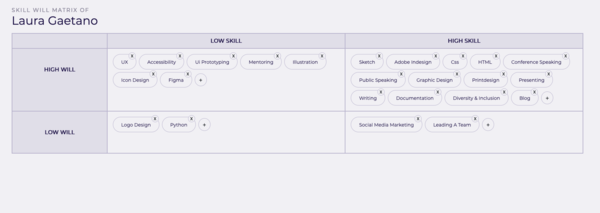
My Skill/Will matrix from 2021 with design, programming and social skills spread out over the four quadrants.
Filling out a Skill / Will matrix may seem easy but it also requires a good deal of introspection. Many of us are socialised to show our strengths and ignore or avoid mentioning our weaknesses: I can’t remember the amount of times I felt the need to “fake it till I make it” in a work setting because I was scared of asking a question or worried about how it would be perceived if I didn’t understand a concept or an acronym. So, sitting down to think about what skills I am objectively not so good at, especially when they’re expected skills in my field, took a bit of honesty.
I found that my Quadrant 2 (High Will, Low Skill) had a few skills that I felt would be important to my development as a designer — skills like “Accessibility”, “User Experience”, and even “Figma” (the design tool). And yet, it felt a bit embarrassing to put those in my “low skill” column.
Skwill: One year later
When I opened up my analog planner at the beginning of 2022 to start thinking about my goals and plan my year, I made a mental note to take a look at my Skill Will matrix and update it as needed. It took me a few weeks to get to it, but this was the updated version at the beginning of February 2022:
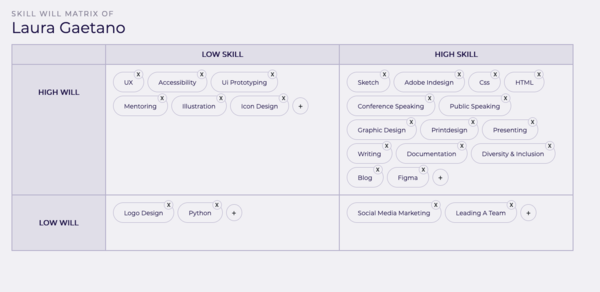
My Skill/Will matrix from February 2022, with “Figma” moved from quadrant 2 to quadrant 1
Not much changed, other than Figma being moved to Quadrant 1 (High Will, High Skill); it may seem like a small change, but with Figma being an extremely powerful tool and now de facto one of the main platforms used by designers across the world, it felt important to celebrate this little step in the right direction. This quick review of my Skill/Will matrix also made me realise that I had subconsciously worked on a specific skill from Quadrant 2 (Figma) because I was interested in it (High Will) and it was necessary for my work.
Fast forward a couple of months: After our Open Space event and a conversation in a session about contributing to open source software with a couple of coworkers, I added “Contributing to open source” to my Quadrant 1 (High Will, High Skill). And given my recent interest and deep dive into the topic of design systems, I promptly added that to the second quadrant (High Will, Low Skill) of my matrix. Here is an updated screenshot — from June 2022 — from my matrix that reflects those changes:
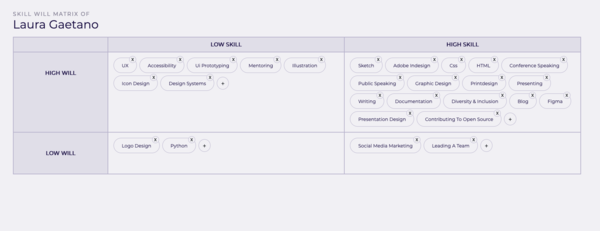
My Skill/Will matrix, updated in June 2022 with “Contributing to open source” in quadrant 1 and “Design Systems” in quadrant 2
What’s next?
As a pretty introspective person, I love the idea of tracking these changes and seeing how my skill set develops over time. Over the last year, it also became evident to me how a skill that seems self-explanatory — for me that’s “Contributing to Open Source”, because I always forget that not every tech worker has the privilege and possibility to work out in the open — can be something extremely useful for people I work with to know about; sharing information about those types of “obvious” skills can spark a conversation and, at times, even move further into mentoring territory.
I also think a matrix like the Skill/Will matrix can help us pinpoint what skills we want to work on next, and be specific with our learning when we feel stuck. Even if you’re not a big planner or goal-setter, regularly looking at your matrix can be a subconscious push in the right direction when you want to get started with a new learning project — or it can make you realise when a skill you thought was important for you to learn actually isn’t.
And you?
What are some skills you’ve been developing over the course of this year? If you filled out a skill/will matrix for yourself in the past—did you ever use it for your skill or career development, and how?











